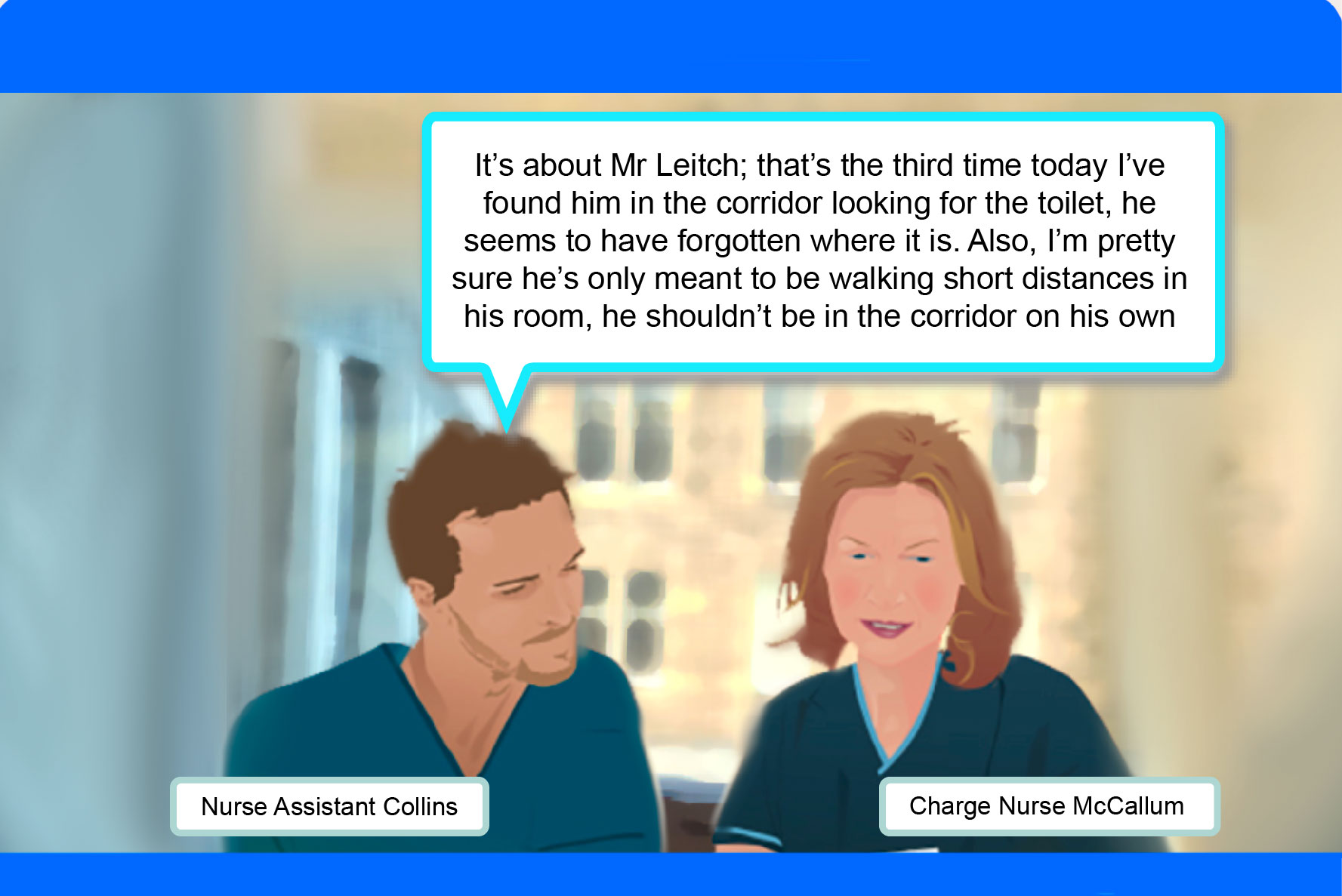 Eddie Leitch is 68 years old. He had a left TACS 4 weeks ago and is now in the rehab ward. He has been making steady progress and is now walking short distances independently
Eddie Leitch is 68 years old. He had a left TACS 4 weeks ago and is now in the rehab ward. He has been making steady progress and is now walking short distances independently
Numerous brain areas are involved in memory and in addition the two hemispheres tend to deal with different types of incoming information. In practice the most important of these is the dominant (usually left) hemispheres role in processing and storing verbal information (what we hear and read) and the non-dominant hemispheres involvement with visual information (pictures, faces, images, etc).
Because a stroke is often localised in one hemisphere of the brain they can impact considerably on one form of memory leaving the other relatively intact.
As the diagram below shows many brain areas are involved in memory. It is important to remember that these brain areas do not work in isolation but are involved in complex networks that underpin memory processes. A couple of the key brain areas are highlighted- click on these for more information.
Have a look at the following 3 short scenarios to explore memory after a stroke in a little more detail.
Memory is a fairly complex concept and can be further broken down into different ‘types’ of memory, these can overlap with each other. Some of the more common ones are detailed below. Select the cross for more information.

Memory is the process that we use to acquire, store, and retrieve information.
A three stage model of how memory works has been popular for some time.
Sorry, but you do not have permission to view this content.
The following patient video is fictional but the scenario is based on real cases. This video contains interactive elements. If you are having issues with opening the interactive video, please follow one of the alternative video links below.
Conclusion
Anger and distress are common in relatives of patients who have a sudden, unpredicted stroke. This module has explored the reasons for this, and how staff can help families in this situation. Sometimes staff find these conversations difficult and emotionally draining. It is important to acknowledge this, and to seek peer support, or even to seek a ‘debrief’ from other staff members.
Factors to consider when meeting with families:
- Barriers. Avoid physical barriers such as desks/beds between clinicians and families
- Eye contact. Ensure that you are seated on same level as the family i.e. not towering over them, but on the same level for good eye contact
- Sitting arrangement. Clinicians should not be positioned right beside families as this makes eye contact more difficult. Sit directly opposite but without invading their space. When speaking, try to have eye contact with each member of the family even if several are present
- Body posture. Avoid adopting a closed posture of crossed legs and folded arms. Aim for an open posture of open trunk but leaning slightly forward to show interest
The following case study video contains interactive elements. If you are having issues with opening the interactive video, please follow one of the alternative video links below.
Think about your last few conversations at end of life care with patients and families. What did you find most difficult?
- Not sure what to say or how to put into words that their family member is dying or likely to die soon
- Outcome and timing of the dying process was uncertain so you couldn’t give an exact trajectory or a timescale when family ask
- Family were very upset, distressed, emotional, angry and this was difficult to deal with at the time
- You were unaware of what the family had previously been told by other members of the healthcare team – not certain if they had been told the patient was dying
- Family had unrealistic expectations of what treatment options were available for someone who is dying
- Explaining that some treatments will not work and may be distressing to the patient when they are dying – such as CPR
- How to be sensitive yet giving difficult information at a pace and level which family will be able to understand
- Discussing nutrition and hydration when the patient has a swallowing difficulty or is refusing food and drink



 Eddie Leitch is 68 years old. He had a left TACS 4 weeks ago and is now in the rehab ward. He has been making steady progress and is now walking short distances independently
Eddie Leitch is 68 years old. He had a left TACS 4 weeks ago and is now in the rehab ward. He has been making steady progress and is now walking short distances independently


